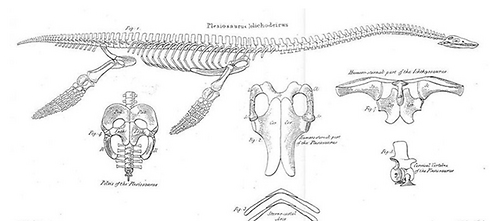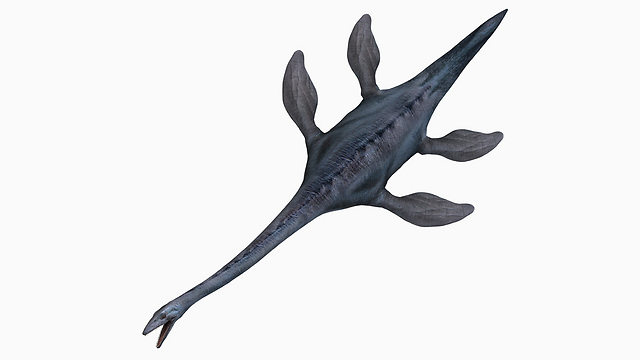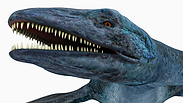
The Elasmosaurus dates back to 85 million years ago
צילום: shutterstock
Remains of 'Dinosaur's cousin' found in Negev
Fossilized skeletal remains of ancient reptile known as Elasmosaurus dating back to 85 million years ago discovered in Arava desert in southern Israel.
Fossilized skeletal remains of an ancient reptile dating back to 85 million years ago were discovered recently in the Arava desert in southern Israel.
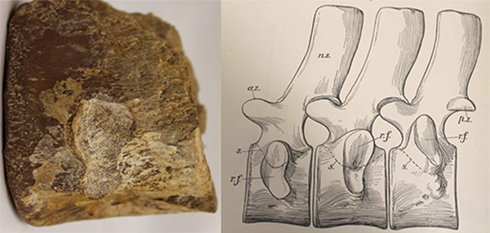
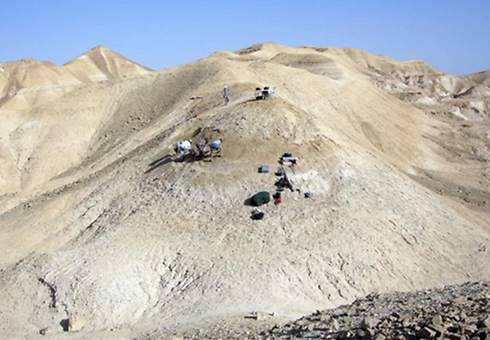
Researchers from the Dead Sea and Arava Science Center found tooth and jaw fragments, broken limbs, fins and vertebrae of the Elasmosaurus (Elasmosaurid) reptile.
The Elasmosaurus was not "a dinosaur but a 'cousin' that lives in shallow waters of up to 200 meters," explained one of the researchers, Dr. Hanan Ginat.
The original length of the marine reptile was about eight feet. The Elasmosaurus had a very long neck and most likely fed on fish. Parts of skeletons of the same species were found in the past in Iran, Jordan, Syria and Morocco, and this time the fossil remains were found about five kilometers south of the Paran Moshav in the Arava desert.

Tooth fragments of the ancient marine reptile found in southern Israel (באדיבות מרכז מדע ים המלח והערבה)
"The skeletal bones were found in a limestone bedrock rich with microscopic fossils that indicate a previous open marine environment with high fertility – that is to say there was a lot of marine life there," said Dr. Ginat.
"The location, adjacent to the bone fragments, as well as the nature of the rock that was fossilized, indicate that the marine reptile was found (at the location) where he died. This is the first ever marine reptile of this kind found in Israel. In the past, similar evidence was found in Arab countries.
The fossilized finding in the limestone slab enables the research crew to understand the conditions and living environment of the Arava millions of years ago, which used to be the site of the ocean line of the ancient ocean of "Tethys."
The remains of the marine reptile and the surrounding microscopic evidence indicate that the Arava used to be a marine environment at a depth of up to 200 meters, rich in nutrients and increased biological activity of animals, both large and small.

Area of excavation in Arava dessert (Photo: Dead Sea and Arava Science Center) (באדיבות מרכז מדע ים המלח והערבה)
The digs were conducted by a joint research initiative completed in the last year by Dr. Ginat and Dr. Sarit Ashcenazi Polivoda from the Dead Sea and Arava Science Center of the Information Ministry.
Gideon Ragolsky, a researcher from the science center, was the first to fine the skeletal remains during an archeological survey and saw the exposed bone on the desert surface. After the find, the science center sent out a team to conduct a paleontological excavation of the area which led to the finding of several other skeletal pieces in the past few weeks.










